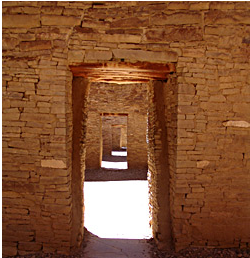Publication Date
6-6-2019
Abstract
The major goal of this dissertation was to examine migration and its impacts on health through use of dental morphological and paleopathological data. The case study is the Southwest United States between A.D. 1200-1400s. The second chapter, written with Corey Ragsdale, Biological Distance and the Fate of the Gallina in the American Southwest, examines where the Gallina people may have gone upon abandoning their homes in the late A.D. 1200s. We used dental data for 492 individuals and mean measure of divergence (biodistance) analysis to examine several hypotheses regarding where the Gallina went. We find that the Gallina may have moved to the Middle Rio Grande region, settling near Albuquerque, New Mexico. The third chapter, Indicators of Stress and their association with Frailty in the Pre-contact Southwestern United States, uses Kaplan-Meier Survival analysis to examine differential mortality risks in the entire sample of people with pathological data recorded (335 individuals). It shows that cribra orbitalia likely has a different etiology from porotic hyperostosis. Cribra orbitalia appears to develop in cases of more severe systemic disturbance. Further, the results demonstrate that there are different survival outcomes for individuals with active, healed or no skeletal lesions (PH, CO, or infection). These results indicate that individuals with active lesions are comparatively frailer than individuals with healed or no lesions. The fourth chapter, Frailty and Stress in People who Move: A View from the Southwestern United States, demonstrates that phenetically-inferred migrants are no different from the host-group in terms of health indicators (LEH, CO, PH, and infection). The 36 individuals identified as phenetically-inferred migrants are less frail (Kaplan-Meier survival analysis) than individuals identified as host-group. This dissertation research adds to a growing body of literature that addresses hidden heterogeneity in risks, frailty, and the Osteological Paradox. It demonstrates that hidden heterogeneity has different layers, and different lesions do not equally impact mortality risk. Further, this research demonstrates that individuals who are likely from elsewhere can be identified through nonmetric dental traits. The methods used here could likely be applied to skeletal nonmetric and metric data as well.
Keywords
dental morphology, hidden heterogeneity, stress, biological distance, southwest united states
Document Type
Dissertation
Language
English
Degree Name
Anthropology
Level of Degree
Doctoral
Department Name
Anthropology
First Committee Member (Chair)
Patricia L. Crown
Second Committee Member
Jane E. Buikstra
Third Committee Member
Heather J.H. Edgar
Fourth Committee Member
Osbjorn Pearson
Recommended Citation
O'Donnell, Alexis. "Trends in Health, Stress, and Migration in the Pre-Contact Southwest United States." (2019). https://digitalrepository.unm.edu/anth_etds/177

